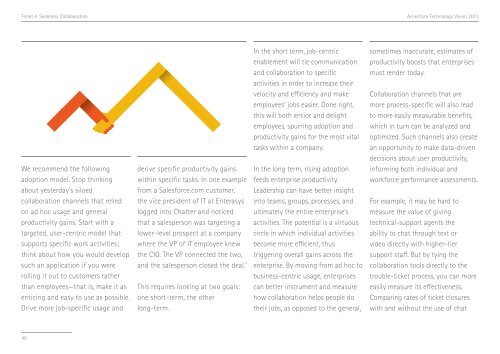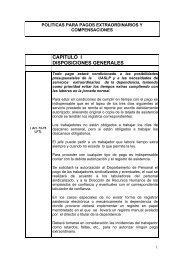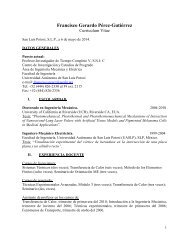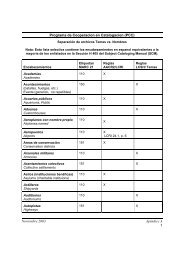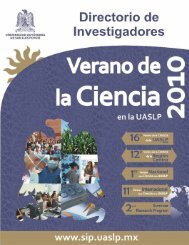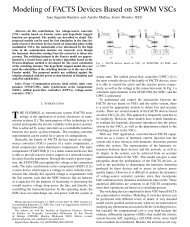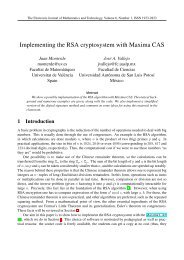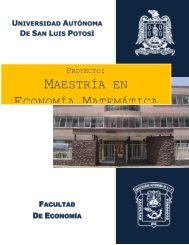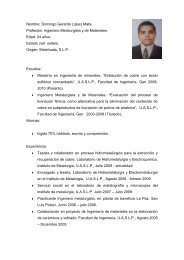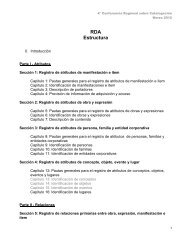Accenture Technology Vision 2013
Accenture Technology Vision 2013
Accenture Technology Vision 2013
Create successful ePaper yourself
Turn your PDF publications into a flip-book with our unique Google optimized e-Paper software.
Trend 4. Seamless Collaboration<br />
<strong>Accenture</strong> <strong>Technology</strong> <strong>Vision</strong> <strong>2013</strong><br />
We recommend the following<br />
adoption model. Stop thinking<br />
about yesterday’s siloed<br />
collaboration channels that relied<br />
on ad hoc usage and general<br />
productivity gains. Start with a<br />
targeted, user-centric model that<br />
supports specific work activities;<br />
think about how you would develop<br />
such an application if you were<br />
rolling it out to customers rather<br />
than employees—that is, make it as<br />
enticing and easy to use as possible.<br />
Drive more job-specific usage and<br />
derive specific productivity gains<br />
within specific tasks. In one example<br />
from a Salesforce.com customer,<br />
the vice president of IT at Enterasys<br />
logged into Chatter and noticed<br />
that a salesperson was targeting a<br />
lower-level prospect at a company<br />
where the VP of IT employee knew<br />
the CIO. The VP connected the two,<br />
iv<br />
and the salesperson closed the deal.<br />
This requires looking at two goals:<br />
one short-term, the other<br />
long-term.<br />
In the short term, job-centric<br />
enablement will tie communication<br />
and collaboration to specific<br />
activities in order to increase their<br />
velocity and efficiency and make<br />
employees’ jobs easier. Done right,<br />
this will both entice and delight<br />
employees, spurring adoption and<br />
productivity gains for the most vital<br />
tasks within a company.<br />
In the long term, rising adoption<br />
feeds enterprise productivity.<br />
Leadership can have better insight<br />
into teams, groups, processes, and<br />
ultimately the entire enterprise’s<br />
activities. The potential is a virtuous<br />
circle in which individual activities<br />
become more efficient, thus<br />
triggering overall gains across the<br />
enterprise. By moving from ad hoc to<br />
business-centric usage, enterprises<br />
can better instrument and measure<br />
how collaboration helps people do<br />
their jobs, as opposed to the general,<br />
sometimes inaccurate, estimates of<br />
productivity boosts that enterprises<br />
must render today.<br />
Collaboration channels that are<br />
more process-specific will also lead<br />
to more easily measurable benefits,<br />
which in turn can be analyzed and<br />
optimized. Such channels also create<br />
an opportunity to make data-driven<br />
decisions about user productivity,<br />
informing both individual and<br />
workforce performance assessments.<br />
For example, it may be hard to<br />
measure the value of giving<br />
technical-support agents the<br />
ability to chat through text or<br />
video directly with higher-tier<br />
support staff. But by tying the<br />
collaboration tools directly to the<br />
trouble-ticket process, you can more<br />
easily measure its effectiveness.<br />
Comparing rates of ticket closures<br />
with and without the use of chat<br />
48


